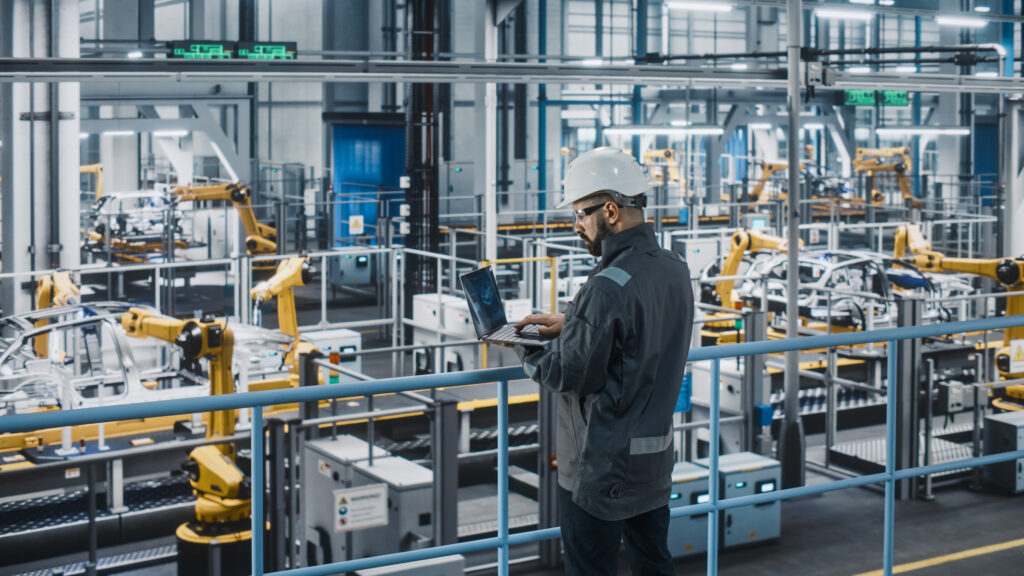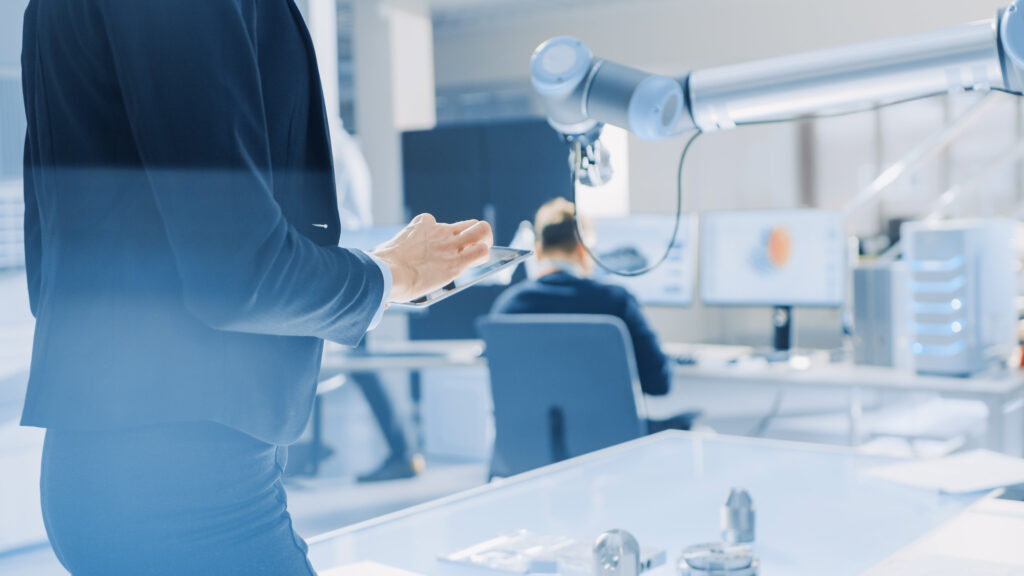The unprecedented advancements in the field of robotics and Artificial Intelligence (AI) in recent years bring exciting improvements and revolutionary positive transformations in the course of human history, development of our civilization and the organization of our society.
Robot advancements with AI
The future of robotics is indeed one of the most anticipated advancements for humanity. It is currently the subject of discussion in most industries and sectors worldwide. Robotics and AI have the power to unleash huge progress in all aspects of our life, work, and society. The pros of adopting robotics and AI are not limited to specific industries, such as manufacturing, logistics and healthcare. Adoption also affects many other sectors and aspects of daily life constructively and beneficially. Embracing robotics and AI positively impacts everyday jobs, mundane chores, routine tasks, and the operation and management of business. Robotics and AI are progressively developing and evolving many occupations and professions, with focus on the improvement of workers’ wellbeing, performance and assistance in their duties.
The growing global market
The impressive advancement and expansion of robotics, AI and automation is clearly reflected in the global robotics market outlook. More and more sectors and businesses understand the numerous benefits of adopting robotics and AI and are rapidly embracing these advancements.

According to global data and statistics collection company Statista, the robotics sector is forecasted to undergo a continuous annual growth rate. Globally the robotics market is anticipated to achieve a notable growth in revenue, with an expected value of US$38.24bn this year. As per Statista, the strongest segment within the robotics market is service robotics and is predicted to lead in market volume. Service robotics are being used in sectors, such as Healthcare, Medical, Military and Defense, Logistics, and others, while Industrial Robots are being adopted in the Automotive, Electronics, Food & Beverage and other sectors. Service robots are additionally segmented into medical, logistics, domestic, rescue, defense, and security (ground, aerial, and marine), while industrial robots can be segmented into articulated, collaborative, Cartesian, parallel, SCARA and others. These stats give a clear indication that investments in robotics from countries all over the world are firmly increasing.
Businesses adopt robotics at a fast pace
The number of businesses across diverse industries adopting robotics to improve effectiveness and productivity, are gradually and steadily growing. As per Statista Market Insights, currently, the top 5 countries for increased levels of automation are South Korea, Singapore, China, Switzerland, and Germany. Since the robotics market size is anticipated to reach $95.93 billion by 2029, the investments and demand in the field are increasing significantly.

The trends driving the robotics market are shaped by the latest developments in emerging technologies. These are 5G, AI, Edge Computing, IIoT, cloud, open-source, smart mobility, collaborative robots, autonomous robots, etc. AI is unleashing an unprecedented number of innovations in robotics and automation. As AI in robotics is evolving and blooming, numerous industries are taking advantage of these latest technologies – for example, by implementing intelligently automated processes to fuel sophisticated data collection and analysis, which empowers businesses, services, and manufacturers to take data-driven decisions, or by adopting self-learning robots to facilitate work processes and tasks.
Since 2020, some sectors are still facing difficulties with staff shortage. In such scenarios, the adoption of robotic technologies is highly beneficial, as it could overcome the lack of workers. Furthermore, such solutions could not only counterbalance the lacking personnel but could also help the current workers with their daily duties and manual repetitive tasks. Additionally, a significant number of investments are made globally for transformation and optimization of industrial facilities and services.
A perspective on 2024 trends
There is a notable trend of intensified industrial automation, which is mainly fueled by Industry 4.0 and digitalization. The steady rise and mass adoption of other trending Emerging Technologies, such as AR, VR, 5G, Digital Twins, Machine Learning, Artificial Intelligence, Edge Computing, IoT and IIoT, Big Data, 3D Printing, Computer Vision, Haptic Feedback, is further boosting the level of innovation and the rise of multiple applications of robotics in all industry sectors and verticals.
Manufacturing is one of the sectors to benefit the most from the deployment and application of robotics. Robots can be implemented into the manufacturing processes and operations to boost and modernize the work by improving the quality, safety, and accuracy and by significantly increasing productivity and efficiency.
Adopting a successful process
The key to successful industrial automation is the application of the various building blocks of Industry 4.0. As Industry 4.0 and digitalization have powered the shift to the adoption of complex and sophisticated automated solutions, data, connectivity, Machine Learning and Artificial Intelligence are of vital importance for successful process optimization. Given the numerous advantages for the industries and businesses, the adoption of industrial robots in manufacturing is on the rise.
More and more manufacturing companies benefit from the implementation of industrial robots in production, resulting in increased production and speed and more workers being employed. Factory automation improves reliability and accuracy of control systems. It can be either fixed automation, flexible automation, programmable automation, or integrated automation. Smart factories are making use of AI-enabled robotics for smarter, reliable and more efficient processes and production optimization. AI-enabled robotic technologies, such as computer vision and haptic technology artificial neural tactile sensing systems (tactile sensing) are used to help automate specific tasks. For example, Reinforcement Learning is often used for improved industrial assembly.
The implementation of robotics, smart automation and smart high-tech manufacturing helps workers with manual labor, repetitive tasks, and dangerous work. It also empowers IT leaders to better understand the corporate dynamics, to have a clearer picture of the organization, to be able to make more informed decisions, based on real-time data and insights, and to be capable of driving Digital Transformation with IT. The technological advancement, which transformed manufacturing in the last years, is fueled by several important trends.
Key digital trends shaping the manufacturing industry:
· Industry 4.0
· Digitalization
· Artificial Intelligence
· Machine Learning
· Internet of Things (IoT)
· Industrial Internet of Things (IIoT)
· Cloud Computing
· 3D Printing
· Robotic Process Automation (RPA)
· Augmented Reality (AR), Virtual Reality (VR), Mixed Reality (MR), Extended Reality (XR)
Additionally, more technologies are used to enhance process execution in industrial automation, such as big data, data analytics, edge computing, and 5G.
Modernizing the industry
There is currently a boom of intelligent automation technologies in industry and manufacturing. Powered by the unlimited potential of robotics and AI, it can radically transform and modernize production as we know it. The steady penetration of emerging technologies provides ground for new and innovative ways of management, operation and work organization. Industrial automation is flourishing, providing unlimited opportunities for novel developments and improvement of employees’ well-being at work.
A bright future
The robotics work trends are centered around notions, highlighting the importance of human well-being, security and contentment at work. Workplace safety, a sense of fulfillment, leaving boring tasks to robots and allowing humans additional time for more meaningful activities. The increasingly widespread adoption of robotics in most industries and particularly in manufacturing eliminates risks in dangerous professions and tasks. Automation also plays a vital role in overcoming the skill gap and workforce shortages. Robotics are of great benefit to manufacturers and businesses. They also help workers with manual labor; IT personnel with overseeing production issues and crafting the optimal industrial setting and equipment configuration; higher management with supervising and predicting business performance and industry specific trends and factors.
The exceptional rate of advancement of AI and robotics is powered by the fast development of important emerging technologies. The combination of these technologies allows the present unprecedented and exciting industry advancements to occur, gaining full spread and reach.
The future of AI and Robotics is particularly promising in manufacturing and other challenging industries. AI and robotics have the potential to unleash beneficial alterations in the way society and work are organized and managed.
Where to get more information
Read my previous blog “The Future of Artificial Intelligence and Robotics“
Contact DELMIA directly here
About the author
Follow on Twitter: @Eli_Krumova
https://www.linkedin.com/in/elitsa-krumova/; https://elitsakrumova.com/

